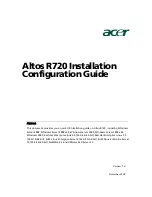
8
About the Hard Disk
The NAS drive internal hard disk comes pre-formatted in three partitions.
The largest partition is pre-formatted in the FAT32 format and is available
for your data storage through either a USB or Ethernet connection. The
other two partitions are in Linux EXT2 format and are used by the NAS
drive’s internal software for supporting the various networking features of
the product.
Note:
Capacity dependent on model. Your operating system may
report capacity as fewer gigabytes. 1 GB = 1,000,000,000 bytes.
Your product’s hard drive is a complex electronic storage system and
should be handled with care, as you might treat a sensitive portable
computer or other state-of-the-art consumer electronics product. Do not
subject it to shock, high temperatures, or strong magnetic fi elds.
Locating NAS Drive on Your Desk
Place the NAS drive on a sturdy desk or table that is free from clutter
that could block airfl ow around the unit. The drive is designed to lie fl at
on its rubber feet, or may stand upright using the included stand. In
either orientation take care not to block any air vents. If using the upright
orientation, install so that the ON/OFF button is at the top.
Which Interface:
USB or Ethernet?
In order to install and use your NAS drive, you need to decide which
interface is better for you. With the fl exibility of the NAS drive, you can
always change the interface you want to use later, depending on your
application or computer environment. However, never attempt to connect
to both USB-B and Ethernet at the same time.
To extend the useful life of your NAS drive,
turn the unit OFF when not in use.
Caution: Do not connect to both USB-B and
Ethernet connections at the same time.









































